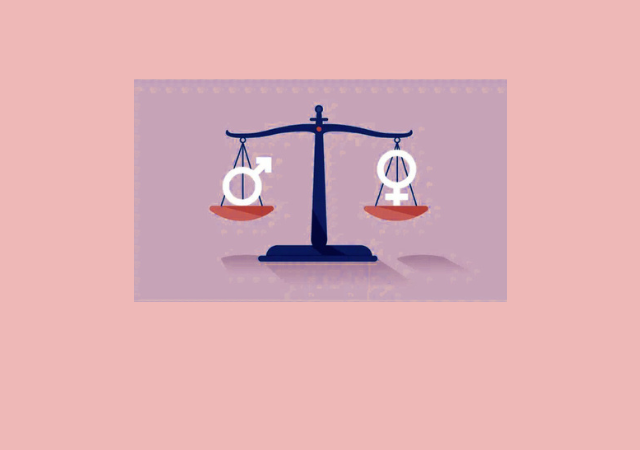Author: Deepak Joshi Pokhrel
The collaborative effort of the United Nations, building upon the success of the Millennium Development Goals, led to the creation of the Sustainable Development Goals (SDGs), also known as the Global Goals. In 2015, the UN adopted the 17 interconnected SDGs. The primary objective of the SDGs is to guide global efforts towards a better and more sustainable future for all. By 2030, the goal is to address poverty, inequality, climate change, and environmental degradation. Furthermore, it also aims to promote peace and justice, focusing on building effective, accountable, and inclusive institutions, providing access to justice, and emphasizing various threats to peace. However, the deadline set by the United Nations is approaching remarkably, and it would be a noble initiative to assess the progress made by the SDGs in terms of gender equality and challenges faced in realizing it.
Women and girls everywhere have equal rights and opportunities, and can live in a world free of violence and discrimination. They have equal say in the decision-making process, be it at the household level or policy level. Their meaningful engagement in the process of planning and implementation will ensure an inclusive and sustainable development. Society continues to view women as subordinate citizens, disregarding their involvement in decision-making processes and their ability to influence those processes. According to the UN Women report (2017), 49 countries lack laws protecting women from gender-based violence.
The gender inequality persists in wages and incentives as well. Studies indicate that women perform 2.6 times more unpaid care and domestic work than men. While families and economies depend on this work, for women, it leads to lower earnings and less time to engage in non-work activities. Sexual rights are critical in their own right. Yet only 52% of women married or in a union freely make their own decisions about their sexual relations, contraceptive use, and health care. While more women have entered political positions in recent years, including through the use of special quotas, they still hold a mere 23.7 percent of parliamentary seats, far short of parity. The situation is not much better in the private sector, where women globally occupy less than a third of senior or middle management positions.
Looking at the reasons why gender inequalities persist everywhere. Start with social norms and values. A majority of countries across the globe are patriarchal. In these male-dominated countries, women’s voices are largely ignored. Likewise, the social structure is based on the assumption that men are decision makers, be it related to household chores or at the policy level, while women are subordinate citizens having no say in any decision-making process.
Ineffective implementation follows the lack of effective policies in place. In many countries, there are no effective laws to address discriminatory gender inequalities. Even if there are legal remedies, they are not effectively implemented. The constitutions of many countries across the globe has guaranteed meaningful participation of women in every affair of the state. But sadly, it has not been implemented with the heart and soul. A weak implementation of laws has laid the ground for perpetuating gender inequalities.
Over the years, many programs aimed at ending gender inequalities have been introduced and implemented. Some focused on the empowerment of women while others emphasized on improving their access to finance, making them self-reliant. But it is very strange to note that many programs fail to deliver the result. The reason was not big. It was simple: weak and ineffective implementation.
In response to growing gender inequalities, the United Nations adopted a collaborative effort (SDGs) in 2015. It, among others, aimed to end gender inequalities by 2030. However, as things stand now, it looks like a daunting task to realize its goal in terms of gender equality. The gender snapshot 2024- an annual report- produced by the United Nations Department of Economic and Social Affairs and UN Women presents a mixed picture. The data presented in this edition of the report show that some progress has been made worldwide on gender equality and women’s and girls’ empowerment. Women hold one in every four parliamentary seats- a significant rise from a decade ago. The share of women and girls living in extreme poverty has finally dipped below 10 percent following steep increases during the COVID-19 pandemic years.
No doubt, there has been remarkable progress made by the SDGs in terms of gender equality. However, there are doubts whether we will end the gender inequalities completely by 2030. To say, despite these advancements, none of the indicators and sub-indicators of SDG 5- the goal of gender equality- have been met. At current rates, gender parity in parliaments remains a distant dream, potentially not achievable until 2063. It will still take a staggering 137 years to lift all women and girls out of poverty. And about 1 in 4 girls continue to be married as children.
The report includes a set of recommendations to eliminate gender disparities across all the goals. For example, it calls for the legal reforms to advance gender equality, highlighting that countries with domestic violence legislation have lower rates of intimate partner violence, 9.5% compared to 16.1 percent for those without. It also outlines six key investment paths that policymakers must prioritize to ensure the full and equal participation of women and girls in every aspect of society.
It is a fact that gender equality is central to the SDGs, and if it is not achieved, the implementation of all the goals will be compromised. With just barely half a decade, the end of gender inequalities for once and all looks a little unimaginable.
References
- https://www.google.com/search?q=objective+of+sdg&oq=objective+of+sdg&gs_lcrp=EgZjaHJvbWUqDAgAEAAYFBiHAhiABDIMCAAQABgUGIcCGIAEMgwIARAAGBQYhwIYgAQyBwgCEAAYgAQyCQgDEAAYChiABDIJCAQQABgKGIAEMgkIBRAAGAoYgAQyCQgGEAAYChiABDIJCAcQABgKGIAEMgkICBAAGAoYgAQyCQgJEAAYChiABNIBCDczNThqMGo3qAIIsAIB8QWT34t7pwSzSg&sourceid=chrome&ie=UTF-8
- https://www.unwomen.org/en/node/36060
- https://unstats.un.org/sdgs/gender-snapshot/2024/
- https://www.google.com/search?q=gender+inequalities+and+SDG+2024&oq=gender+inequalities+and+SDG+2024&gs_lcrp=EgZjaHJvbWUyBggAEEUYOTIHCAEQIRigAdIBCDY4ODlqMGo3qAIIsAIB8QUgLEyUjHo3FPEFICxMlIx6NxQ&sourceid=chrome&ie=UTF-8






